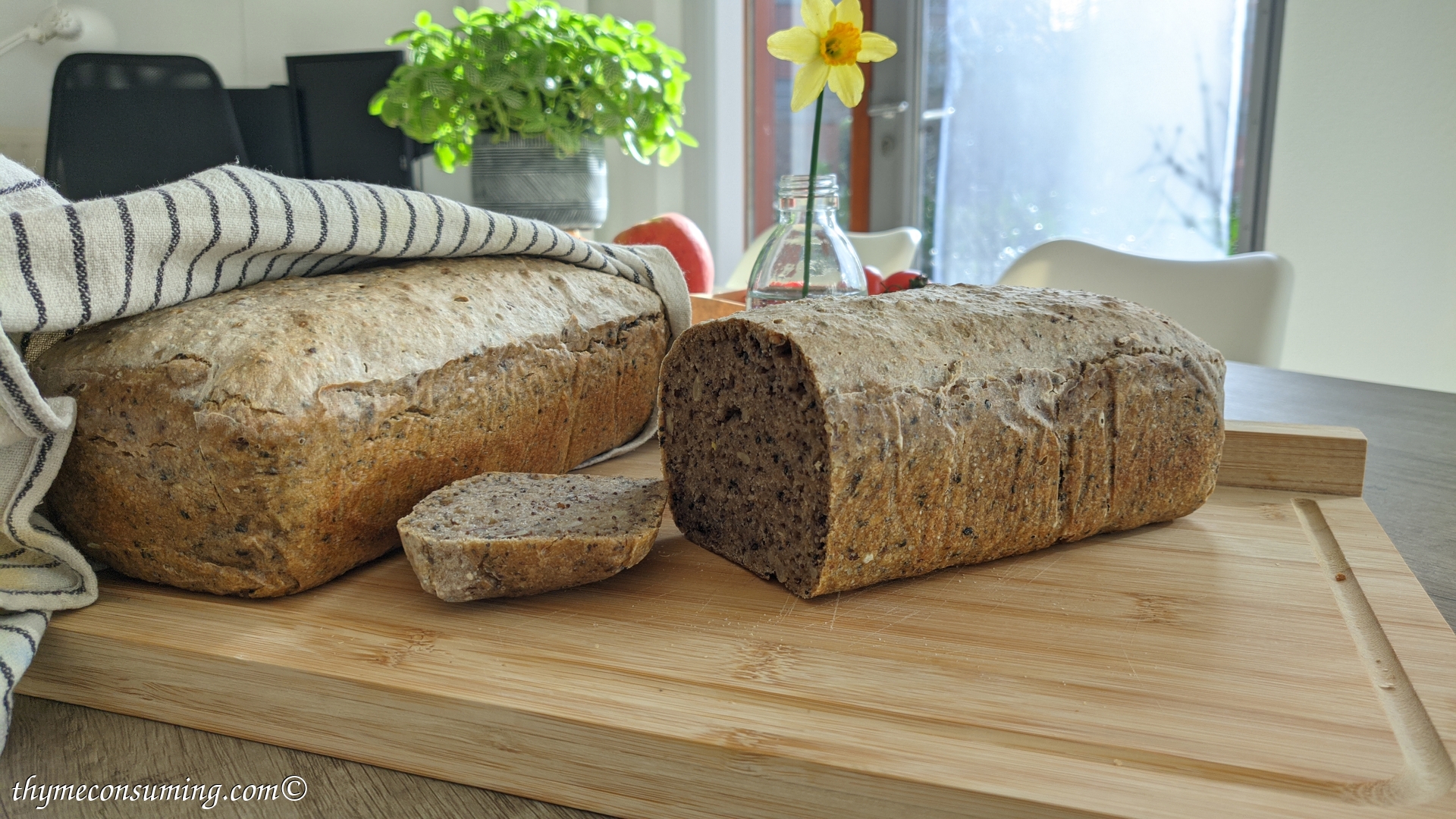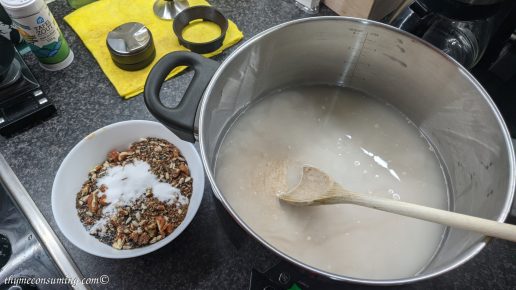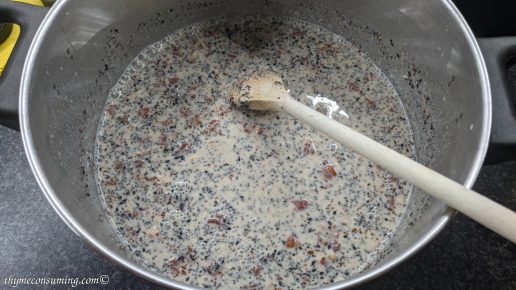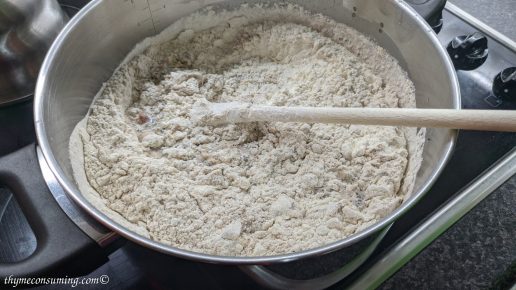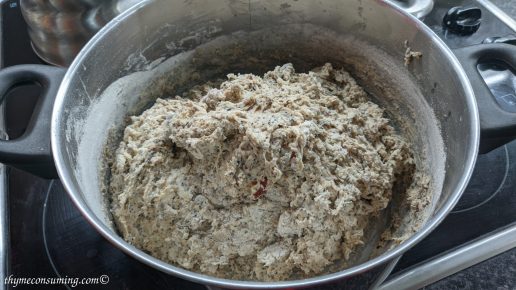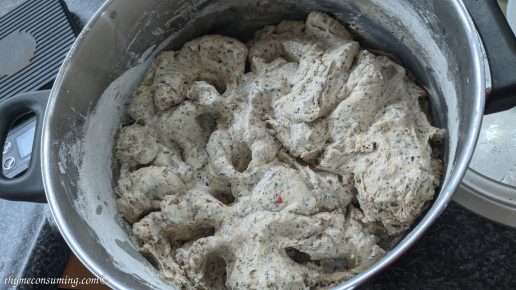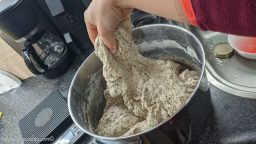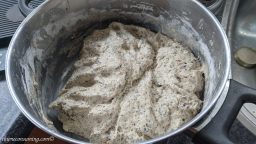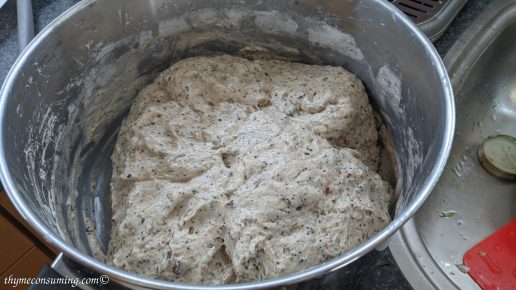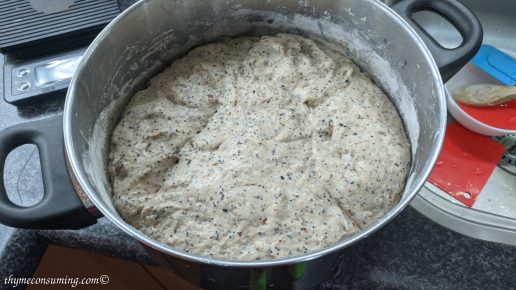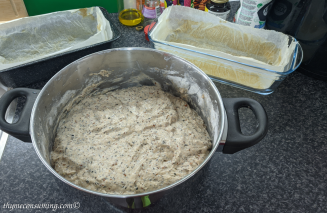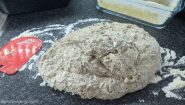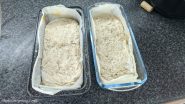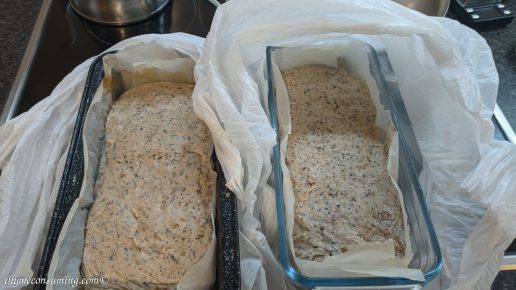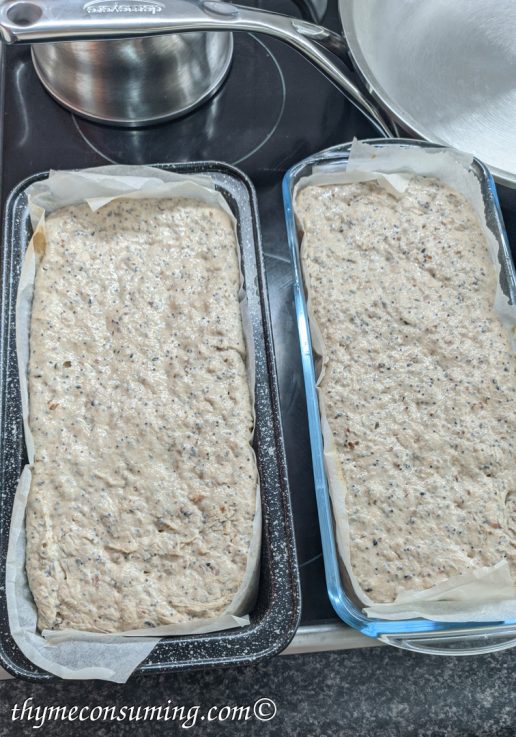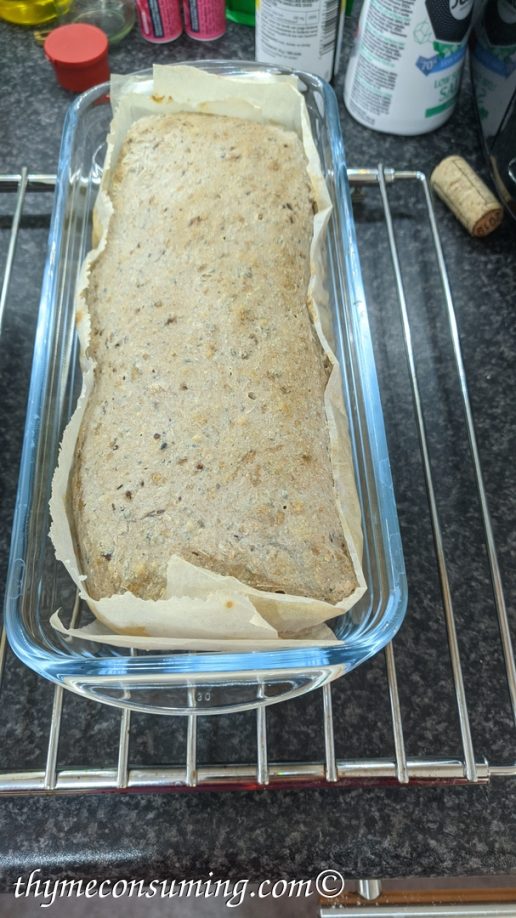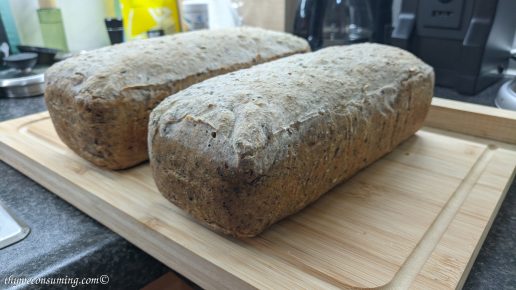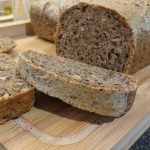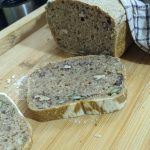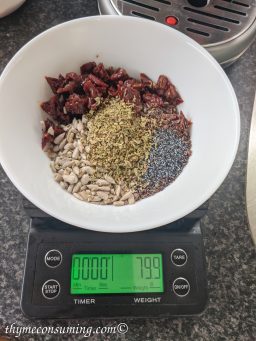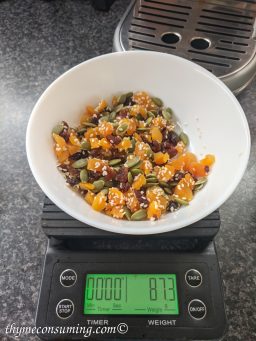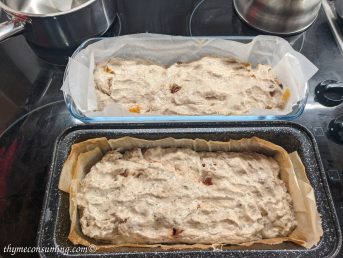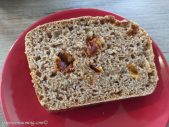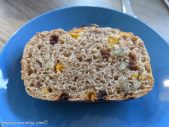Sourdough bread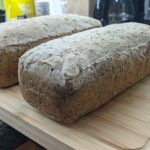
Preparation time: 15 min
Stretching: 3-4 times in 6 hours
Waiting time in the form in the fridge: 5-6 hours
Proofing time in the form at room temperature: 6-9 hours or overnight
Cooking time: 45-50 min
Baking temperature: 9-10 min at 210 C, 38-40 min at 170 C, with ventilation
Difficulty: medium (easy technique, a lot of waiting and planning)
Example of planning
- Start feeding your starter on Thursday evening and let it feed overnight
- On Friday morning mix the ingredients at 10 am
- Mix the dough and stretch it at 11 am
- Stretch it again at 12 pm, 1 pm and 2 pm (last two are optional)
- Put the dough in the forms at 4 pm
- Let it rest in the fridge covered in bags until 10 pm
- Take it out of the fridge and let rest on the counter overnight
- Bake first thing in the morning on Saturday
Ingredients for 2 tins
- 400 g of sourdough starter (i feed mine with whole wheat flour)
- 400 of white bread flour (or min 11% protein)
- 200 g of whole wheat flour
- 200 g of spelt or rye flour
- 16 g of salt
- 500 g of water at 33 C temperature
- 80 g of walnuts or pecans
- 100 g of seeds (less is fine too). I use crushed flax, sunflower, poppy and sesame seeds.
Directions
- In the 33 C warm water, I add my starter. This way it dissolves properly.
- A bit about the starter: I make bread once a week, so I keep mine in the fridge and feed it only once a week the night before I make the bread. I keep in the fridge 100 g of starter. I bring it to room temperature on the counter and then feed it with 200 g of whole wheat flour and 200 g of room temperature water. Then i let it raise overnight in the oven, initially with the light on for a few hour and when I go to sleep I turn off the light. This give me in total 500 g of starter: I use 400 g for the bread and 100 back in the fridge. This way I never throw away any starter.
- In the water mixed with the starter I add the salt and the seeds. This allows a perfect mixing.
- I then add all my flours: white bread flour, whole wheat and spelt or rye.
- I only combine it roughly. Then I put it in the oven with the light on for 1 hour to hydrolyze.
- After an hour I wet my hand and massage to combine it well.
- Then I stretch every corner of the dough and fold it on itself.
- I do this up to 4 times maximum, but 2 can also be enough. 4 times gives a fluffier result. I do it at 30 min-1 hour interval. I am usually not exact with it.
- At 4 pm or when you finish work on Friday I take the dough from the oven, split it in two and add it in the tins.
- I cover it with bags so it won’t dry and leave it in the fridge until I go to sleep.
- Before I go to sleep I take the two bags from the fridge and just leave them on the counter. I opened the bags to show how they look after a few hours of being in the fridge.
- In the morning they raised beautifully and are ready to be baked.
- I bake them at 210 C for 10 min and then at 170 C for another 35-40 min. This depends on your oven, so you need to experiment a bit.
- Take the bread out of the tins and let them cool on a wooden board with a towel on them.
- Ready to be eaten warm with butter and in a million other ways. Saturdays are just so much better since I make this bread.
- spelt version
- version with less seeds and more nuts
- rye version
I also experimented with added some additional taste to the bread and it turns out very delicious as well:
- Italian bread with sundried tomatoes, sunflower seeds, oregano, flax seed and poppy seeds. I use 80 grams of this per bread instead of the nuts and seeds. If you make two breads as in this recipe, just double the quantity to 160 g.
- Sweet bread with 90 g per bread of raisins, chopped dried apricots, pumpkin seeds and a few white sesame seeds:


